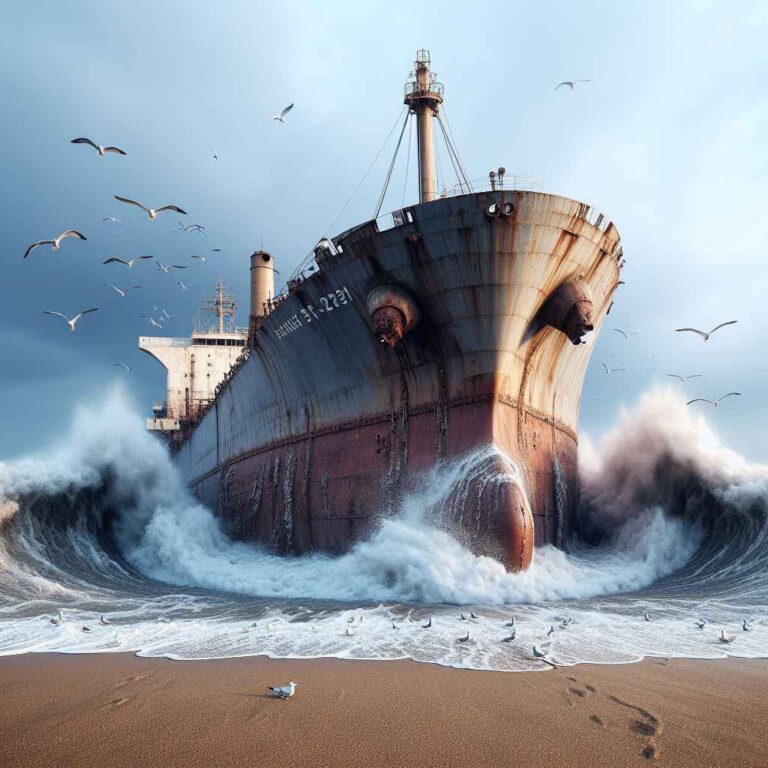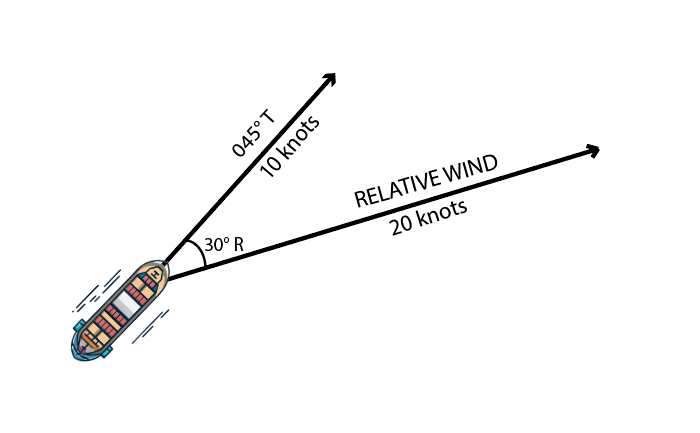
If you have ever seen a ship in the water, you may have noticed some numbers painted on its hull, near the bow and stern. These are called draft marks, and they indicate how deep the ship is submerged in the water. Reading ship’s draft marks can help you estimate the weight of cargo on board, the amount of fuel and water consumed, and the clearance needed to navigate safely in shallow waters.
WHAT ARE DRAFT MARKS?
Draft marks are numbers placed in a vertical line towards the forward and aft of a vessel. They gauge the distance (draft) between the waterline and the lowest point on the ship’s hull, which fluctuates depending on cargo loading. The draft marks are usually measured in meters or feet, and are divided into smaller units such as centimeters or inches. For example, a draft mark of 6.5 means that the ship’s keel is 6.5 meters or 21 feet below the waterline.
Draft marks are located on both sides of the ship, at three positions: the stem (bow), amidships (middle), and stern (back). The stem and stern draft marks are aligned with the fore and aft perpendiculars, which are imaginary vertical lines that intersect with the waterline at the extreme ends of the ship. The amidships draft mark is aligned with the midship section, which is the widest part of the ship.
WHY ARE DRAFT MARKS IMPORTANT?
Draft marks are important for several reasons.
- It helps determine the displacement of the ship, which is the weight of water that the ship displaces when floating. By knowing the displacement, you can calculate the weight of cargo on board using Archimedes’ principle, which states that an object immersed in a fluid experiences an upward force equal to the weight of fluid displaced. The displacement also affects the stability and maneuverability of the ship.
- Draft marks help monitor the consumption of fuel and water by the ship. As fuel and water are used up, the ship becomes lighter and rises higher in the water, reducing its draft. By comparing the initial and final drafts, you can estimate how much fuel and water have been consumed during a voyage.
- Draft marks help ensure safe navigation in shallow waters. By knowing the draft of your ship, you can avoid grounding or hitting underwater obstacles that may damage your hull or propeller. You can also plan your route according to the depth of water available at different locations and times.
HOW TO READ DRAFT MARKS?
To read draft marks, you need to follow these steps:
- Find a suitable location where you can see both sides of the ship clearly. Ideally, you should be at eye level with the waterline and perpendicular to the hull.
- Locate the draft marks on both sides of the ship at each position (forward, amidships, stern). They should be painted in white for visibility.
- Observe where the waterline intersects with each draft mark. Refer to the illustration below.

4. Repeat this process for each position (forward, amidships, stern) on both sides of the ship if possible.
5. Compare your readings on both sides of the ship. If they are equal or very close, your ship is level or has a negligible trim or list. Trim is the difference between forward and aft drafts relative to the designed waterline. List is the inclination of the ship to one side or another due to uneven loading or external forces. If your readings differ significantly on both sides of the ship, your ship has a noticeable trim or list that may affect its performance and safety.
6. Calculate your mean draft by averaging your six readings. This is an approximate measure of your overall draft that can be used for general purposes.
7. Calculate your maximum draft by finding your highest reading among your six readings. This is an accurate measure of your deepest point that can be used for critical purposes such as navigation.
SOME TIPS FOR READING SHIP'S DRAFT MARKS
- Use binoculars or a telescope to read distant draft marks.
- Read both sides of the ship and take an average if there is a difference due to list or current.
- Read draft marks when the ship is at rest or moving slowly to avoid errors due to squat or waves.
- Read draft marks in daylight or use artificial lighting if necessary.
- Be aware of variations in water density due to temperature and salinity, which can affect buoyancy and displacement.
It’s important to note that different ships may have different types of draft marks. It’s always a good idea to check the ship’s manual or ask the crew for guidance if you are unsure how to read the marks. By following these simple steps, you can accurately determine a ship’s draft which is very useful in various ship’s operations.




